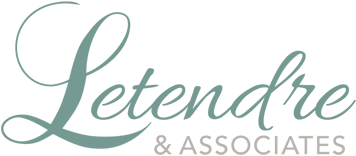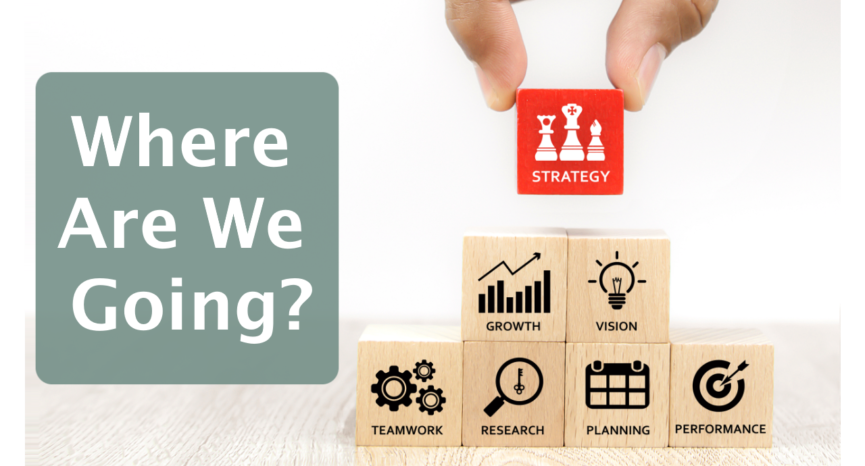Where Are We Going?
Like you, I have been spending a lot of time lately thinking about the future. It is refreshing to see so many of my clients getting back to strategic thinking and strategic action. As senior leaders, one of our most vital roles is setting the organizational direction.
Our staff and Boards are ready to move out of crisis mode and they look to us for signs and signals that we are moving forward. It rests on our shoulders to set the strategic direction of the organization. Our organizations are looking for clarity about where we are going. I recently spoke about this, From Crisis to Clarity, on the Healthcare Shapers podcast.
The world has changed and we are well-served to revisit assumptions, examine the environment, and refine, if not re-define, our strategic path.
Organizational Direction
Setting the organization’s direction involves examining and clearly defining your mission, vision, organizational values, goals, and strategies. For some this also involves defining key customer segments and markets.
Take the time to make these critical strategic decisions for the organization and its future — establishing the strategic framework for decision-making, resource allocation, and action.
During the pandemic, some organizations put this type of strategic work on hold with a sole focus on the present moment. For others, they felt that such work needed to occur in an in-person strategic planning context, and so they delayed. For my best clients, they took the opposite approaches. They utilized the health crisis to accelerate the execution of their strategic work. They executed in 6 months what would have previously been a year-long undertaking as they already had great strategic clarity. Still others sought guidance on how to use a virtual or hybrid strategic and/or action planning approach, and made huge strides without bringing people together in the same room.
Regardless of what was accomplished or postponed strategically, all are now ready to do strategic work again, both strategic direction setting and strategic execution. It is time and our organizations are taking notice. The caliber of the discussions, the willingness to reexamine entrenched assumptions, the courage to ask what if, and the boldness to act, these are some of the notable differences that I am seeing in recent months in strategic efforts.
Here are a few insights to consider as you undertake this vital work in a new light.
Thoughtfully Design the Approach
Rather than using generic approaches to strategic planning, action planning, or setting your organizational direction, it is wise to tailor the design to the specifics of the organization. What are you seeking to accomplish through the process? What is the organization’s capability and track record in executing its prior plans? Where can an outsider’s vantage point be most valuable?
Let me share a few examples to illustrate:
Strategic Thinking
I was working with an organization where the senior leaders in the organization had only limited experience with strategic work. They were superb in clinical and operational matters, but had not yet developed and honed their skills in strategic thinking. And so, we carefully and thoughtfully designed strategic planning activities that drew them out of an operational mindset into strategic thinking (even if just for the strategic sessions where we co-developed the organizational direction). They have since, through successive cycles of strategic work, become strategic thinkers and strategic doers!

The Board’s Role
Another organization wished to involve the Board exclusively in setting the organization’s strategic direction. I counseled them to consider the best ways to involve the Board vis-à-vis senior leadership. In my years of doing this work, I have yet to experience a Board who understands the industry, sector, and market as deeply as the full-time professionals that they have hired as the CEO and Vice Presidents. I have seen all too often the implications of not striking the right balance here. In this case, the Board proceeded to set the strategic direction with the use of another consulting firm and then handed it over to the CEO and senior leadership to implement. The depth of understanding, commitment, and buy-in to a strategic direction cannot easily be acquired without the involvement of senior leadership in the discussions and weighing of alternative strategies. This depth of involvement comes from an approach with senior leadership and the Board having well-designed roles within the process, each bringing their unique contributions to the process. It took this organization quite some time and effort to make up for lost ground.
Level of Maturity with Planning
Another organization, fairly new to strategic planning and direction setting, used an approach not well-matched to their organization’s level of maturity with planning. They utilized an approach that involved large numbers of people in the organization from the Board, to staff, to customers. While the senior leaders were involved within the inclusive process, the design did not place sufficient attention on the vital role of senior leadership in setting the strategic direction – in my experience this is essential to the plan and its execution. The initial approach did not include adequate time for in-depth discussion by the senior team, without others in the room, to discuss and debate alternatives and priorities. They then sought outside guidance on how best to implement the plan; this work involved placing senior leaders in a central role in order to achieve increased understanding, big picture perspective, and ultimately execution of the plan. A well-designed planning process achieves these things during the plan development process, not afterward. Otherwise, precious time is lost moving from direction setting to action.
Designing for Styles
Finally, another organization had a key member of the senior management team who often dominated discussions and was not yet skillful in integrating the perspectives of their colleagues. Therefore, we designed an organizational direction setting process with the objective of balanced involvement. The process used a variety of techniques to achieve this objective within the process.
As you emerge from the crisis, define your organization’s strategic path forward with thoughtful attention to the best approach for undertaking this strategic work — consider your organization’s unique situation, level of experience, and how to create optimal momentum.
Our organizations are ready and are asking: “Where are we going, and when will we get there?”.

If you’d like to receive these Inspirations in your inbox every other week, you can subscribe to Kathy’s Excellence Advantage Inspirations Newsletter.
Kathy Letendre, President and Founder of Letendre & Associates, advises organizations and leaders to create their excellence advantage.
Contact Kathy by phone or text at 802-779-4315 or via email.

